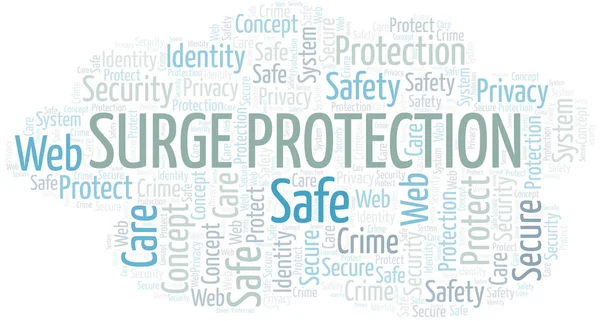To protect electronic equipment from power surges and voltage spikes while keeping voltage from going above a safe threshold, an electrical device called a surge protector is utilized. When a threshold is surpassed by 120V, a surge protector blocks the voltage or redirects it to ground voltage. Without surge protection, anything beyond 120V can harm electric components irreparably, limit internal device lifespans, burn cables, and destroy data.
Surge protection is implemented in communication infrastructure, process control systems, power distribution panels, and other key industrialized systems. Smaller versions are frequently installed in the electrical service doors of homes and commercial buildings.
Features of Surge Protection Device
Here are some of the features and components that one must know before opting surge protection device:
- While a transformer with an iron core has the capability of transferring alternating current (AC), it, however, cannot withstand rapid surges.
- To guard against common circuit spikes, a transient voltage suppression diode may occasionally be used in conjunction with a Zener diode.
- A surge protector offers internal protection and guards against device and external surges if the circuit breaker trips or a fuse breaks.
- With the use of a low pass filter, the uninterrupted power supply holds spikes and allows the flow of external power beyond the battery.
- A thermally fused metal oxide varistor (MOV) regulates the voltage at a rate that is three to four times that of conventional current. Parallel MOV connections extend MOV life and enhance current capacity. If MOVs are exposed to several little or several large transients, they may self-destruct.
When is the Right Time to Install Surge Protection?
Instead of asking when to opt for surge protection, the right question is where to use it. Even though not every gadget needs one, those that do should always use it. Plugging lamps and another compact, inexpensive device directly into a wall outlet is possible. However, larger or more significant objects should all utilize surge protectors, as should appliances like computers, printers, televisions, and refrigerators that need consistent power. Any equipment that would be pricey to repair or that you don’t want to lose in the case of a power surge should be protected.
Understand the Difference Between Surge Protector and Power Strip
The terms “surge protector” and “power strip” are quite frequently confused for one another, which they are not. Power strips are priced and provide a secure way to plug several devices into one outlet. They come with a simple circuit breaker that reduces electricity to prevent overloads, but beyond that, they offer no true defense against power surges or spikes. Make sure to purchase a surge protector rather than a power strip if you want to safeguard your equipment against electrical storms and other power spikes.
A Guideline to Choose the Right Surge Protection
The following are some things to consider while looking for a surge protector:
- Joules: The more joules your surge protector has, the more voltage it can safely handle. The strongest and most durable protection comes from a rating of at least 600 joules.
- Signal Light: One of the most crucial features available is the signal light feature. The fact that the indicator light is ‘on’ indicates that it is still functional.
- Voltage Clamping: This is the threshold at which your surge protector must operate to begin diverting electricity away from your plugged-in devices. Under 400 volts should be the clamping voltage.
- Response Period: The quicker your surge protector responds to electrical surges, the less time your appliances are exposed to them and the longer their lifespan.
- UL Score: Electronic equipment is put to the test by independent product safety agency Underwriters’ Laboratories to see how effectively they work. To ensure superior quality and optimum safety, look for a surge protector with a high UL certification.
Here’s How You Get the Best Surge Protection
Surge Protection is an important addition to any household or commercial setup. Therefore, when buying one, make sure you get it from a reputed supplier. Online research can help you find several distributors. Reach out to them using the email id or phone number available on their website. With the right firm, you can even get a discount as well as installation service.



















